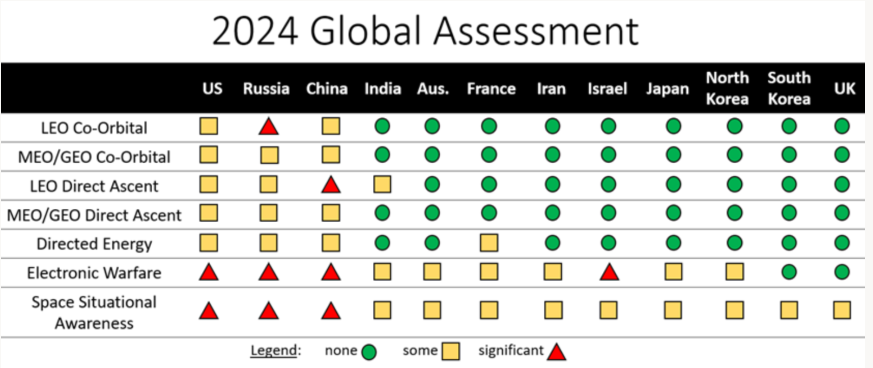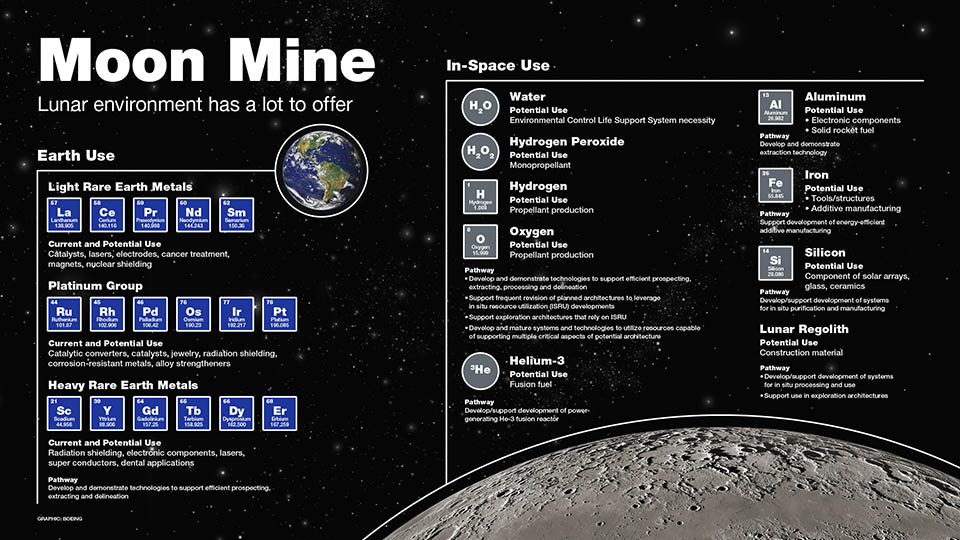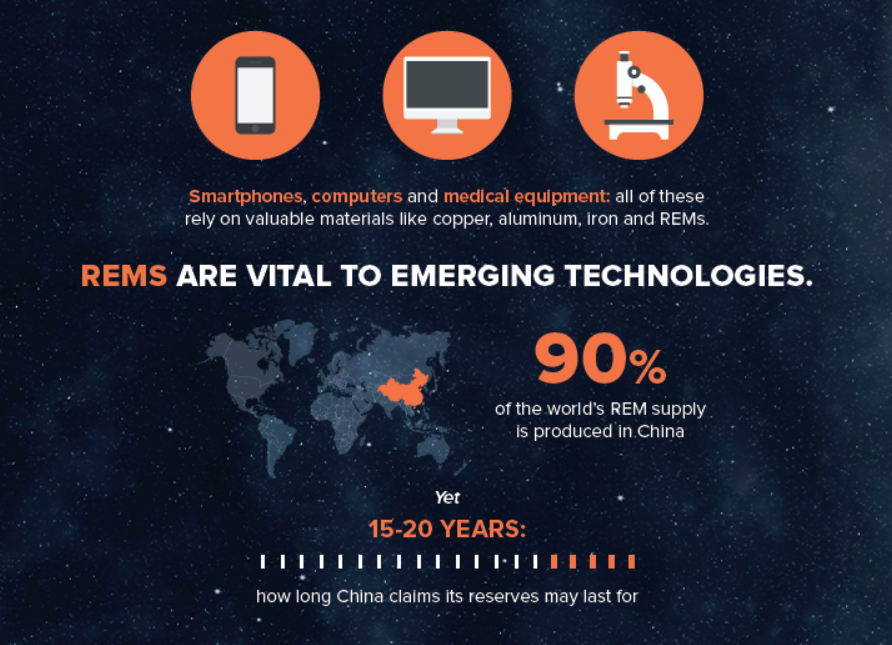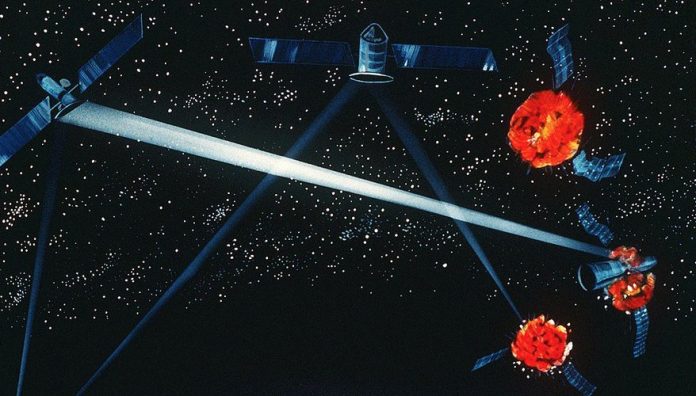On April 2, it was announced that Russia and China are rapidly developing their space warfare capabilities, and are on track to exceed the United States own space-based capabilities, according to the Secure World Foundation’s “Global Counterspace Capabilities” annual report.
Why It Matters:
Russia and China have been modernizing and investing heavily in their respective space programs, rapidly reaching milestones in engine technology, satellite technology, rover deployments, and extraterrestrial travel. China has quickly developed an expanding arsenal of reconnaissance, communication, and alleged space-based weapon systems. Russia and China in general are increasing their extraterrestrial footprint. This threatens the balance of power in space and increases the possibility of conflict between the U.S. and Russia and or China. This development also reflects the increased development of global powers in the extra-terrestrial domain, a trend that is very likely to rapidly increase in the coming decades.

The Details:
For example, Russia and China recently announced that they were planning to cooperate on developing a moon base that is powered by a nuclear reactor, aiming to establish the base by 2035. As part of the announcement, Russia and China announced that the base would be open to the international community, a necessary stipulation to make sure the base is not in violation of the 1967 Outer Space Treaty.
The 1967 Outer Space Treaty outlines the foundations of space law. It forbids the creation of claims by sovereign nations on celestial bodies, the presence of weapons of mass destruction in orbit, and it prohibits military activities on celestial bodies. It also sets general guidelines to ensure the safe and peaceful exploration of space.
In 2023, Kongsberg-NanoAvionics reported that China has 493 operational satellites, Russia has 167, and the United States has 2926. In the year 2000, only 14 nations operated satellites, but in the years since, 91 new countries have been put into orbit.
According to the National Security Analysis, China and Russia’s “space relations are indicative of a broader effort to build mutual trust, further Chinese and Russian influence and counter Western political and economic pressure, facilitate multipolarization, and achieve common national security goals”.
Nikkei Asia reported that China will begin to build 26,000 communication satellites to “cover the entire world” by 2029. These satellites will be created by state-run companies.
According to the American Defense Intelligence Agency, China “doubled” its number of satellites in orbit between 2019 and 2021.
On March 3, U.S. Space Command General Stephen Whitling stated that space has become an “expanding security challenge” and warned that China is growing its military capabilities in space at a “breathtaking pace”, according to The Hill.
According to Kenneth P. Rapuano, the assistant secretary of Defense for Homeland Defense and Global Security, Russia, and China are “looking to asymmetrically undermine our space-based capabilities” and that “Space is a vital national interest” which “underpins our economy” and “our way of life”. He also noted that China “is the lead rocket-launch nation in the world”.
On February 17, intel sources reported that Russia was attempting to develop a nuclear space weapon that would destroy satellites with a massive energy wave, according to CNN.
According to NASA’s Jet Propulsion Laboratory, the moon holds “hundreds of billions of dollars” of untapped resources and also a large hosting of rare earth minerals, key resources for the creation of modern technology.
A study jointly produced by members from the Colorado School of Mines and the International Monetary Fund found that in 30-40 years, “the production of some metals in space could overtake their production on Earth”.

What’s Next:
As space-age technology increases around the world, and space becomes increasingly developed and explorable, a new space race will likely commence. The amount of valuable minerals and resources that experts suggest are on the moon, let alone in the form of near-earth asteroids is incredible. The United States, China, and Russia all know that whoever can control the access, extraction, and processing of these minerals will be a major player in this new frontier and have an extreme advantage on earth.
According to the Outer Space Treaty of 1967 and its numerous supplements, nations are not allowed to claim sovereignty over pieces or entire celestial bodies. However, corporations are allowed to make claims, and due to the often ‘murky’ relations between the American, Russian, and Chinese governments and the national defense companies’ that they utilize in some aspects of space operations, these companies ‘claims’ will likely reflect those of their respective governments.

Throughout human history, there have always been conflicts that stem from control over resources or the lack thereof. For example, the Scramble for Africa, the Second Congo War, the Gulf War, and the European conquest of the Americas. This will likely be no different.
The urgency of developing extraterrestrial resources will be heightened by increased usage of rare earth minerals (REM) and the hegemonic control that China has over these resources. As Chinese and American relations are likely to continue to sour, there is a possibility that China “shuts off the tap” of these resources to the U.S. Though this would be very detrimental to both parties, and so therefore unlikely, in the event of a war, however, nothing is off the table.
In Conclusion:
Force projection in space will be as critical as force projection on the Earth itself. As competition for control of space and tensions between the United States, Russia, and China continue to heighten over contrasting issues on Earth. The effects of this competition will be felt in space, as each nation races to establish effective control and will strive to deter other nations from increasing their control.
Violence between unmanned assets in space will likely be seen as a preferable alternative to war on the surface, meaning that conflict could very likely begin in space, instead of the surface. As evidenced by the 2023 Department of Defense “Space Policy Review and Strategy on Protection of Satellites”, American national security policy in the coming decades will very likely have a sizable increase in objectives that pertain to space-based technology development, assets, and research.
The untapped potential that lies on the moon and beyond, and the importance of utilizing space-based assets for national security threats will lead to a rapid development, and possible conflict, in the orbit of the great blue orb we call home.


